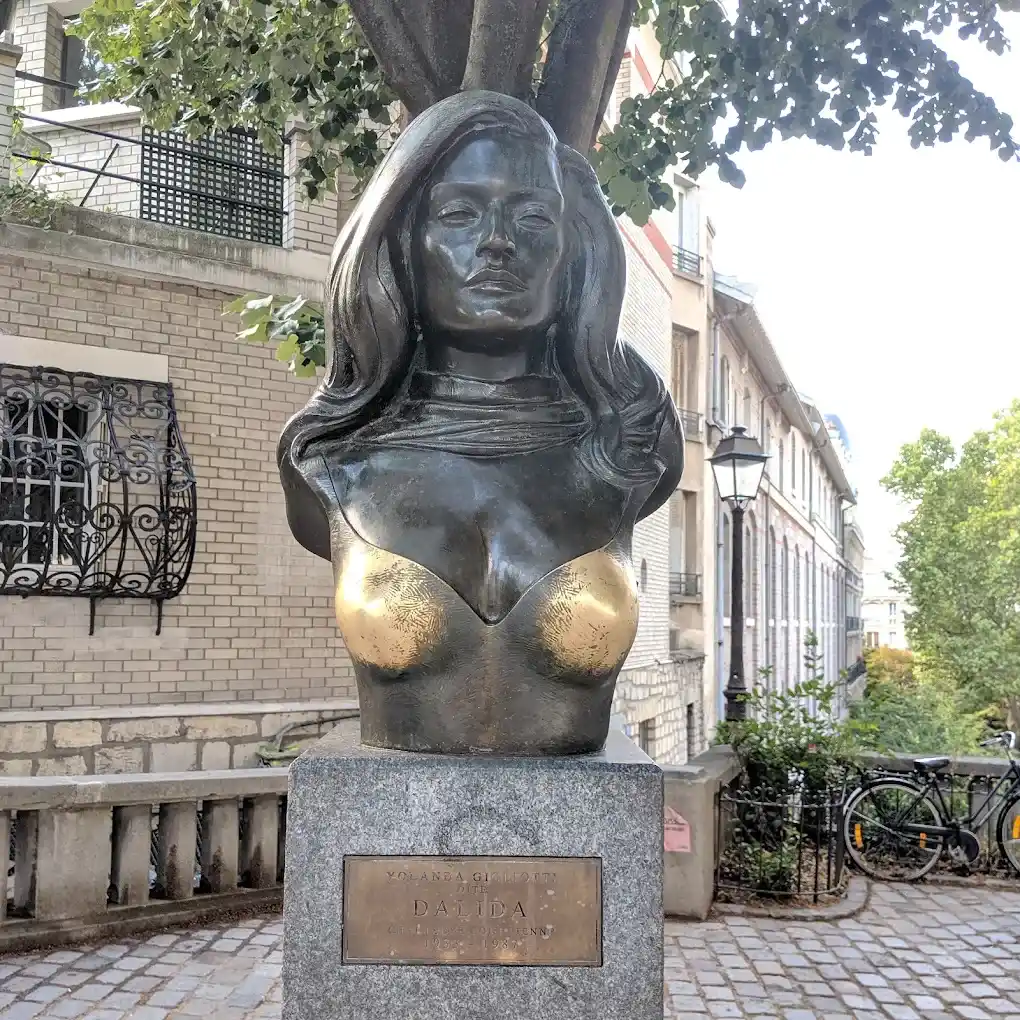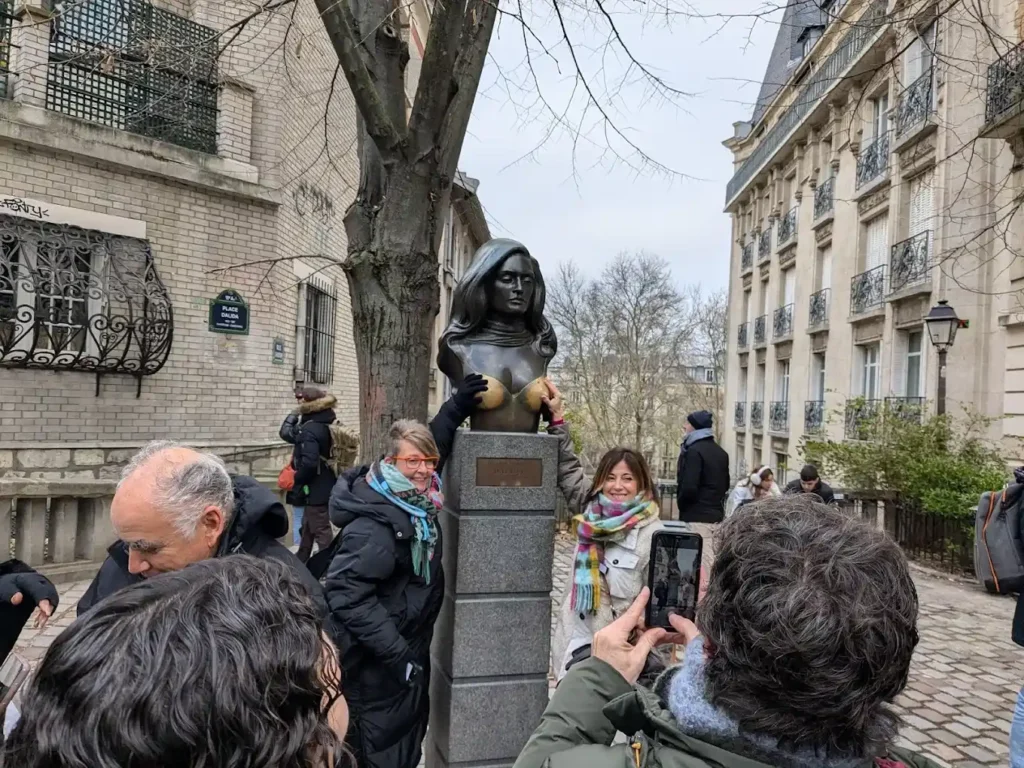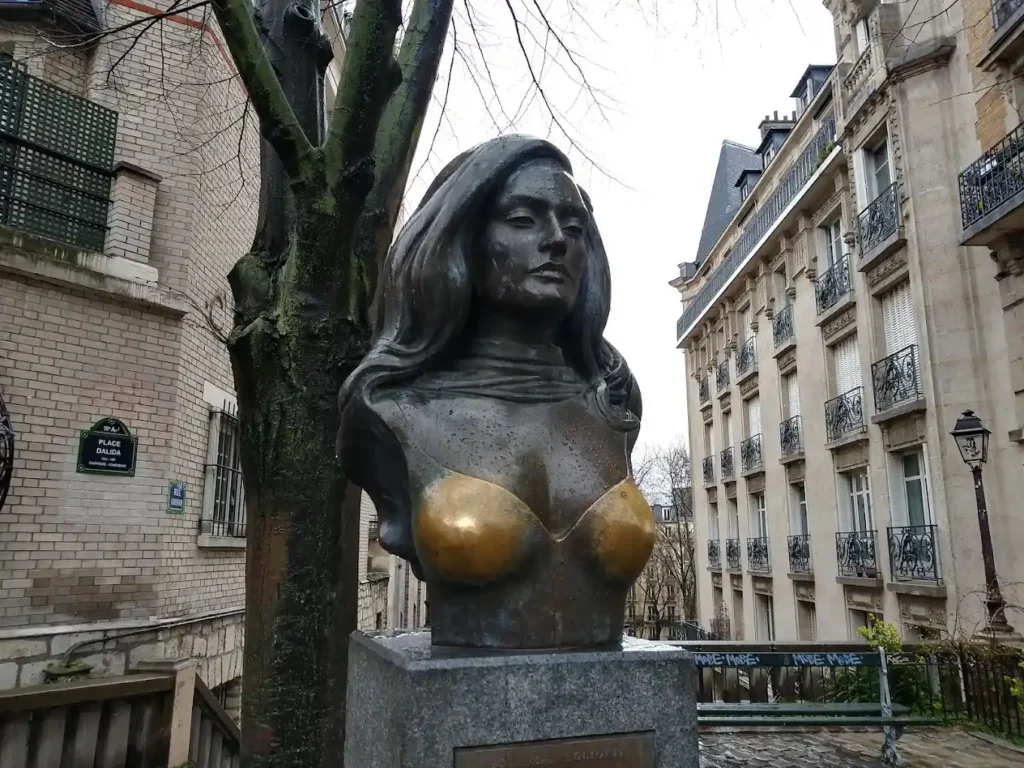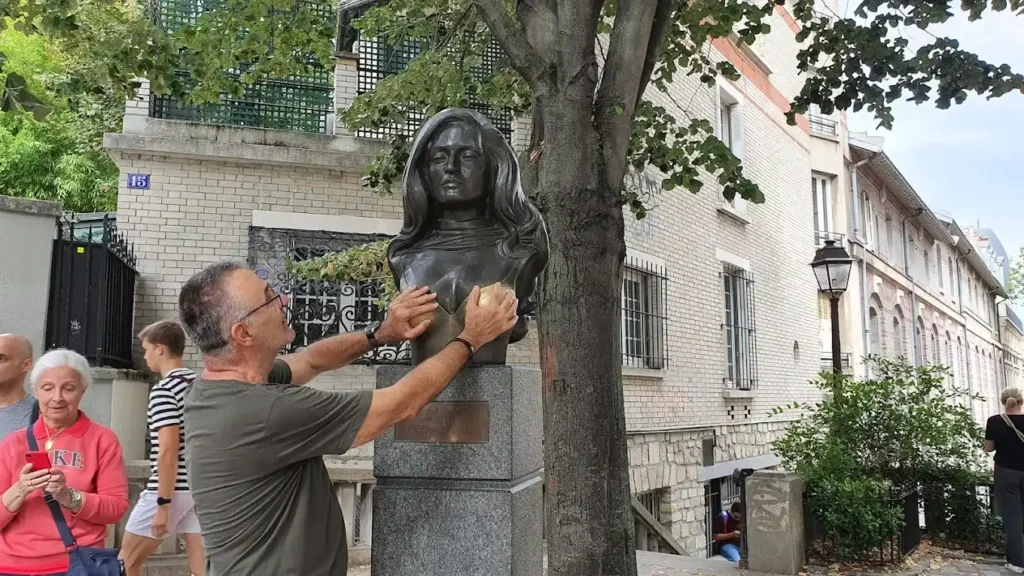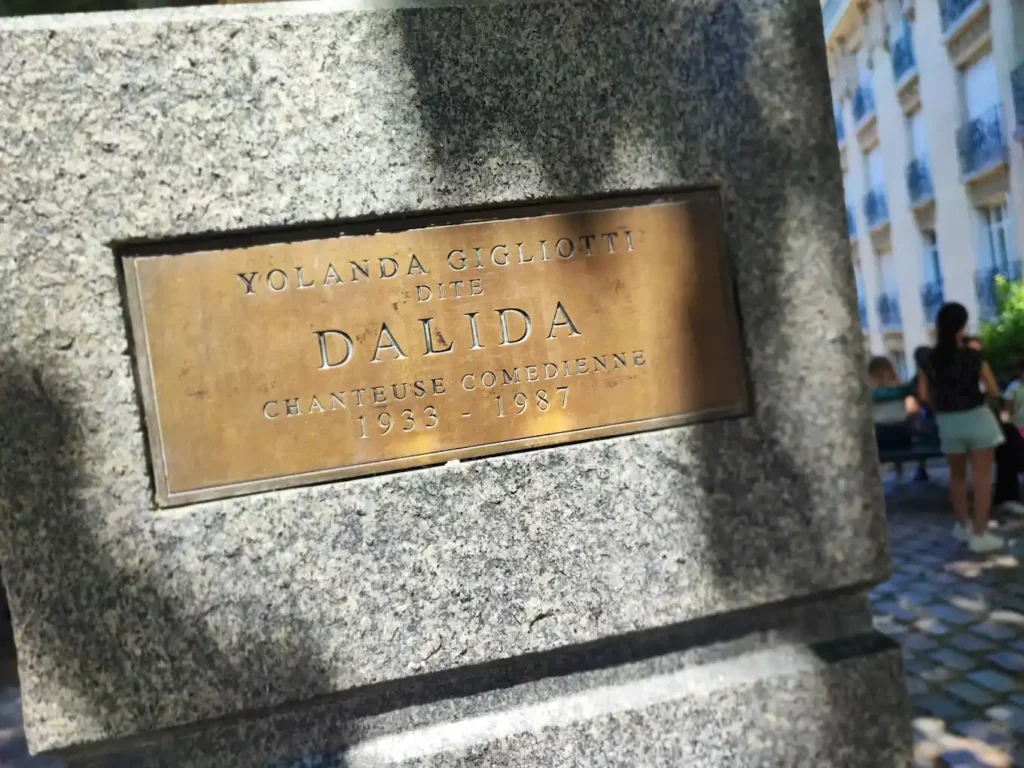In a corner of Montmartre, at the end of a cobblestone street that seems made for tourists, there is a small square — barely a clearing among trees, benches, and old houses. And in the center, a bronze bust.
It’s Dalida.
Since 1997, this sculpture has stood at the heart of Place Dalida. It was placed there ten years after the singer’s death, as a tribute to the artist who had lived just a few steps away, in an elegant house on rue d’Orchampt. The bust — graceful and dignified — is inspired by her prime. A steady gaze. An elongated neck. Wavy hair cascading over her shoulders. A classical, almost sacred beauty.
But a closer look reveals something strange.
The bust is worn down. Not all of it. Just one part. The most intimate. The most visible. The breasts — shiny, polished, almost glowing like gold. In contrast to the rest of the sculpture, darker and aged by time.
The reason isn’t written anywhere, but it’s widely known. It’s become a tradition.
Tourists arrive, pose for photos… and rub the bust. Always in the same spot. Because they say it brings good luck. Especially in love. No one knows exactly when it started. Or who was the first. Only that over time, the gesture became habit. Ritual. Joke.
For some, it’s a harmless game. For others, a sign of disrespect.
Locals, used to the quietness of the square, watch with resignation — sometimes with annoyance. They say the spirit of the tribute has been lost. That the bronze no longer honors the artist, but turns her into a carnival attraction.
Still, the sculpture remains. Unshaken. Staring ahead. Bearing the weight of her story, her legend… and the hands of thousands of strangers.
